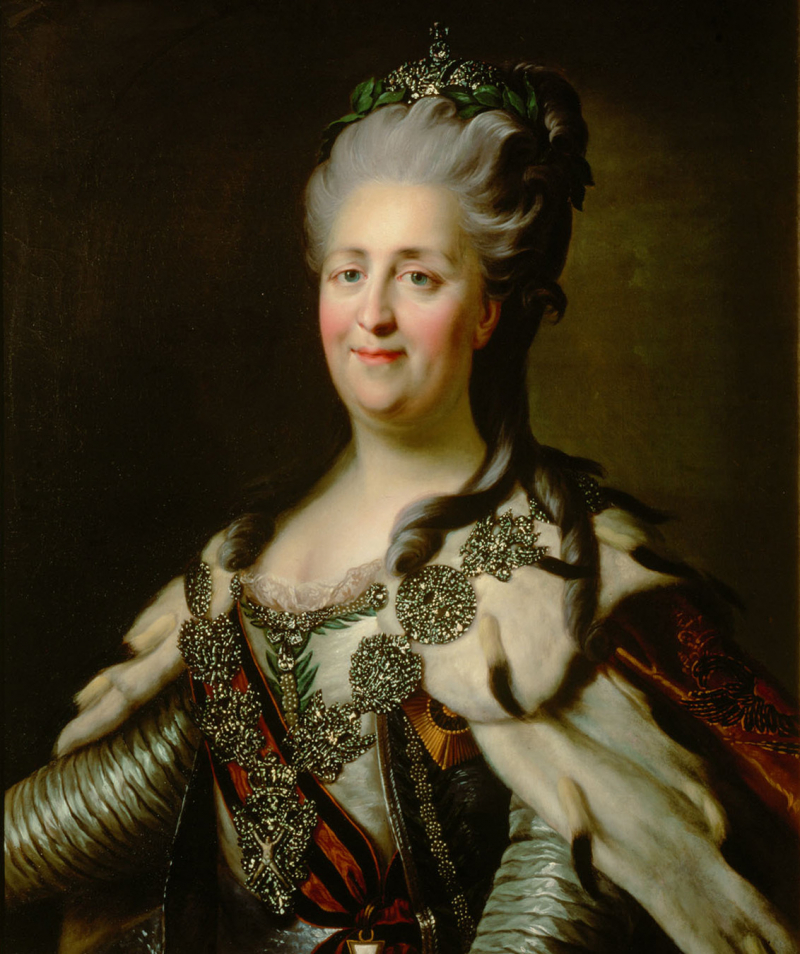Catherine the Great
Catherine II (born Sophie of Anhalt-Zerbst; 2 May 1729 - 17 November 1796), also known as Catherine the Great, was Russia's last and longest-ruling Empress (1762-1796). Following the overthrow of her husband and second cousin, Peter III, she rose to power. Under her long reign, Russia experienced a renaissance of culture and sciences, which resulted in the establishment of many new cities, universities, and theaters, as well as large-scale immigration from the rest of Europe and the recognition of Russia as one of Europe's great powers.
Catherine frequently relied on her noble favorites in her accession to power and rule of the empire, most notably Count Grigory Orlov and Grigory Potemkin. She ruled during a period when the Russian Empire was rapidly expanding through conquest and diplomacy, aided by highly successful generals such as Alexander Suvorov and Pyotr Rumyantsev, and admirals such as Samuel Greig and Fyodor Ushakov. Following victories over the Bar Confederation and Ottoman Empire in the Russo-Turkish War, the Crimean Khanate was crushed in the south. Russia colonized the Novorossiya territories along the Black and Azov Sea coasts with the help of the United Kingdom. The Polish-Lithuanian Commonwealth, ruled by Catherine's former lover King Stanisaw August Poniatowski, was eventually partitioned, with the Russian Empire gaining the lion's share. Russians were the first Europeans to colonize Alaska in the east, establishing Russian America.
Catherine reformed the administration of Russian guberniyas (governorates), and she established many new cities and towns, including Odessa, Dnipro, Kherson, Mykolaiv, and Sevastopol. Catherine, a fan of Peter the Great, continued to modernize Russia along Western European lines. However, military conscription and the economy remained dependent on serfdom, and the increasing demands of the state and private landowners intensified serf labor exploitation. This was one of the main reasons for rebellions, such as Pugachev's Rebellion of Cossacks, Nomads, Volga Peoples, and Peasants.
Catherine the Great's reign is also known as the Catherinian Era. The Manifesto on Nobility Freedom, issued during Peter III's brief reign and confirmed by Catherine, freed Russian nobles from military or state service. The empress endorsed the construction of many nobility mansions in the classical style, which changed the face of the country. She is frequently counted among the enlightened despots. She presided over the Russian Enlightenment as a patron of the arts, including the establishment of the Smolny Institute of Noble Maidens, Europe's first state-financed higher education institution for women.












